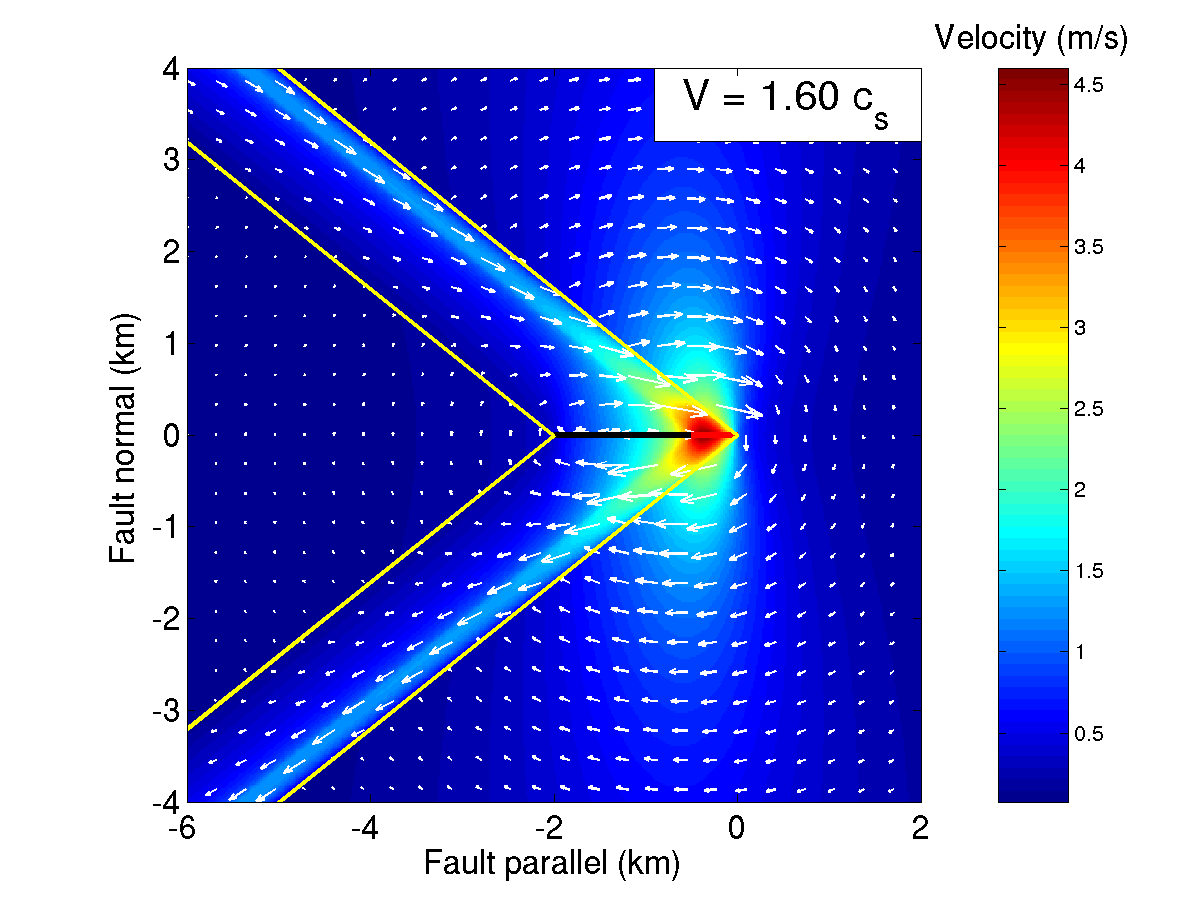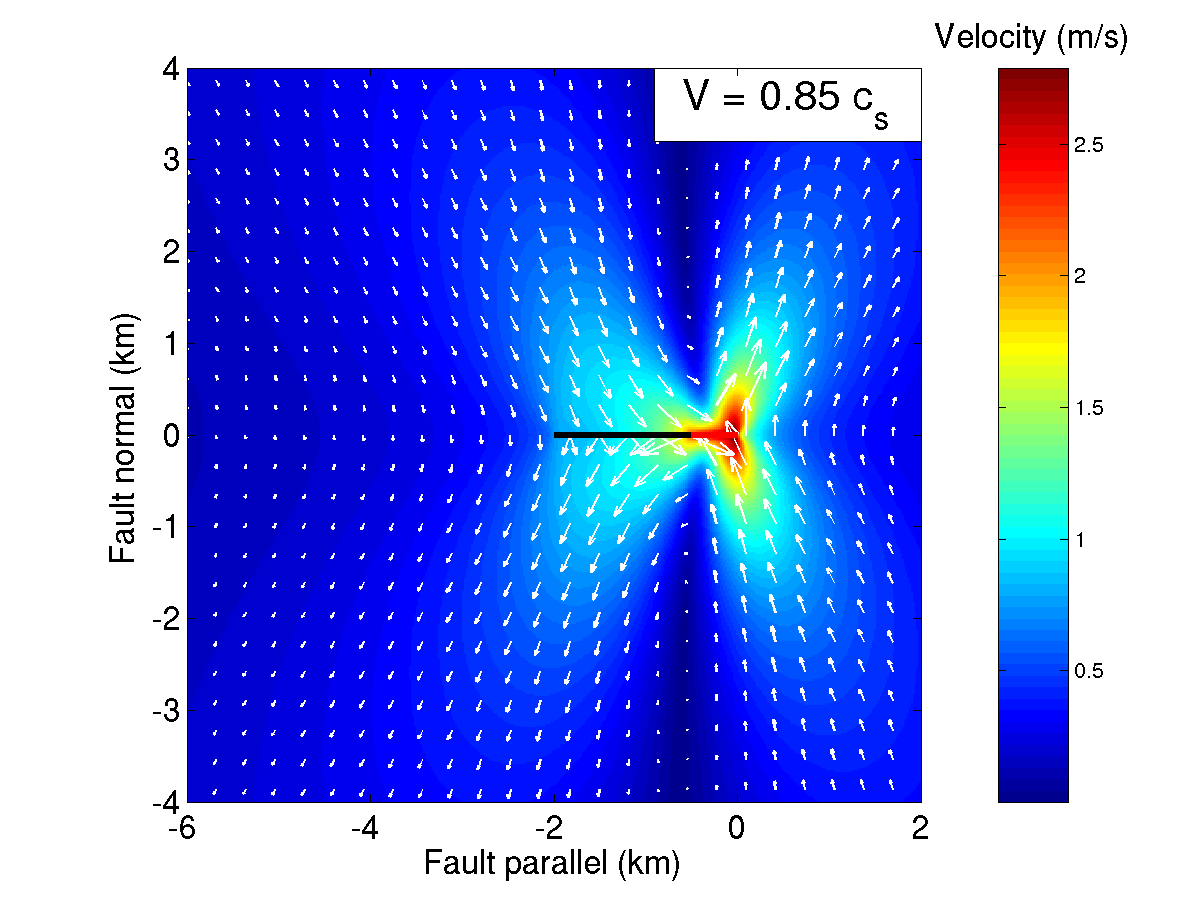|
|
|
|
|
|
Supershear Ruptures
|
We have recently been focusing on an interesting class of ruptures in which the propagation velocity of the rupture front exceeds the shear wave speed. While the theory for such ruptures has been around since the early 1970s, only in the past few years has solid experimental and observational evidence emerged. Remarkably, the same phenomenon occurs at the cm scale in laboratory fracture experiments (by Rosakis and coworkers at Caltech) as in the earth on the 10 km scale! We have studied a simple model of a 2D rupture pulse propagating at a constant velocity in order to characterize the type of ground shaking that will occur near faults. Figure 1 shows the velocity field for a subshear rupture, and Figure 2 is the same for a supershear rupture.
Figure 1: Velocity field for a subshear rupture. You are basically seeing how the ground (e.g., the earth's surface) moves as the rupture sweeps by. The color scale measures the amplitude of the ground's velocity and the arrows point the direction of its motion. The zone of active slip is marked by the solid black line and the red line shows the region when the material failure process occurs. Note that the ground shakes predominantly in the direction perpendicular or normal to the fault, consistent with most near-source records of real earthquakes. 
Figure 2: Same as Figure 1, but for a supershear rupture. In this case, the shear waves radiate from the slip zone, forming a planar Mach front. A seismogram capturing the passage of the shear waves contains an exact record of the slip velocity history on the fault! Obviously good for seismologists interested in the source process, these ruptures potentially produce large amplitude shaking at distances quite removed from the fault. Further discussion of the near-source ground motion from supershear ruptures can be found in Dunham and Archuleta (submitted 2004 to GRL) Questions? E-mail Eric Dunham |
